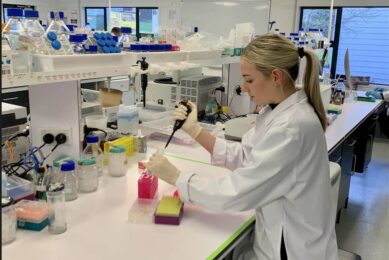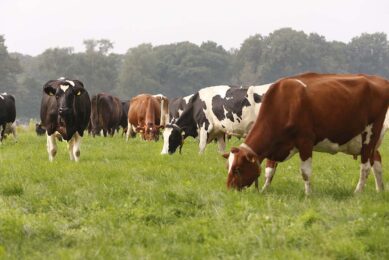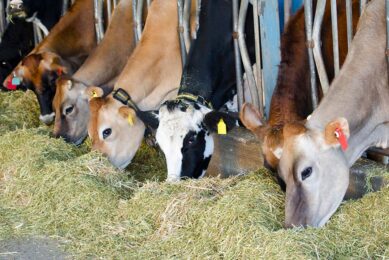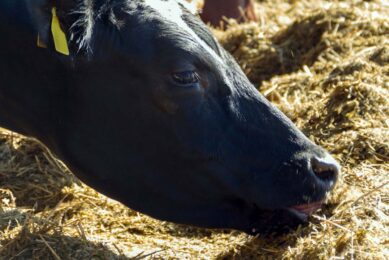Reaping the rewards of robotic milking
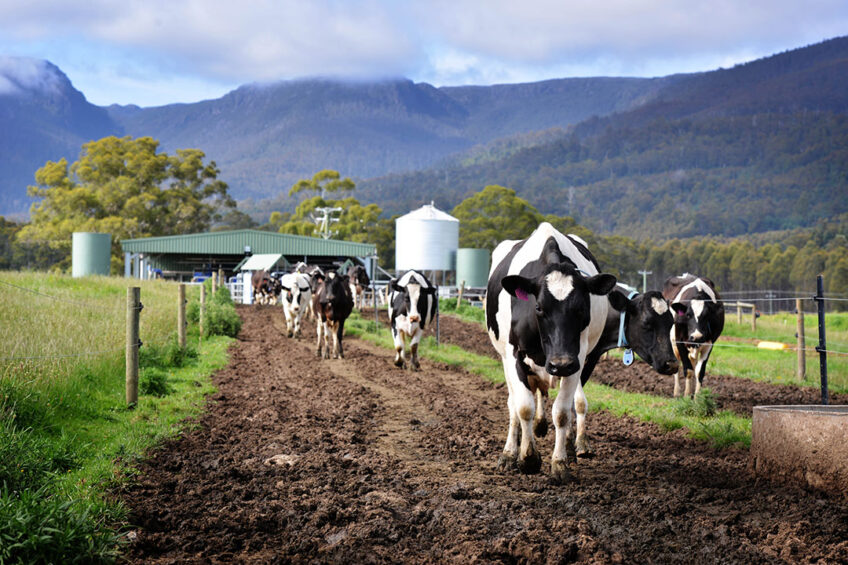
Although there is a wide range in performance between farms, the average dairy farm in Australia has the potential to increase its number of cows by up to 60% by using an automatic milking system (AMS).
However, farmers will need the right tools and resources to make their robotic system successful, says Dr Nicolas Lyons, project leader of the Milking Edge project. “There is a set of conditions that will help an AMS to perform better,” says Dr Lyons. “And there are a number of things that need to align in order to achieve the optimal performance.”

The Milking Edge project – initiated by Dairy Australia, the New South Wales (NSW) Department of Primary Industries (DPI) and DeLaval – is monitoring commercial AMS farms across Australia to collect data and provide farmers with a detailed picture of the performance of these systems.
“There has been a lot of investment in robotic milking systems from commercial farmers in recent years,” says Dr Lyons. “In 2018 the industry felt it was time to invest in a training and extension project that would bring together all the findings and experience of our research and of farmers.”

Success of automatic milking systems
The project is currently in its 3rd and last year. The aim of the Milking Edge project is to create tools and resources that will help producers to consider, invest in and operate AMS more successfully.
The project offers farmers a chance to increase their industry knowledge on AMS through formal training. It supports stronger industry engagement through activities such as discussion groups, conferences and field days. There is a dedicated communication presence about the project, including social media, web, newsletter and media articles. The project also created a modern online community of practice to collaborate and communicate on all things robotic milking.

Cost and availability of labour
“The project will help farmers understand what the technology of AMS is and consider if it could be useful for them,” Dr Lyons explains. “Farmers can learn what it means to operate the technology and how to improve the way they operate. We are building things like online information modules and training packages. All areas of farm management are available for farmers and service providers to look at.”
 New technology to optimise milk production and welfare
New technology to optimise milk production and welfare
Agtech company Cainthus launches Alus Behavior to allow large dairies to further optimise milk production and animal welfare. What else can we expect?
The training modules can be used by farmers interested in AMS, or those that have already decided to invest in the technology. They are all free and available online. The modules on AMS Generalities, Reproductive performance in AMS and Incentive management in AMS have already been accessed by about 100 people since their launch.
The project has been spending a lot of time engaging with producers. “Last year we held several field days and conferences,” Dr Lyons points out. “Obviously we have had a stronger online presence this year because of Covid-19, such as webinars and discussions with farmers online.”
The NSW DPI has been interested in increasing the adoption of AMS in Australia for a while. The department expects it might be able to address the issues of cost and availability of labour as well as offer opportunities to increase productivity and profit.
 Keeping costs down with sharemilking
Keeping costs down with sharemilking
Keeping the costs down to achieve a decent profit is the main goal for a young Scottish couple currently sharemilking on a farm in New Zealand.
Farm, cow and robot performance
In 2015, the department started a project with key performance indicators (KPIs) to create a benchmark. A total of 28 AMS farms nominated themselves to be monitored monthly. The project results provide farmers with a better understanding of what is achievable under AMS operation. The KPIs allow farmers to benchmark farm, cow and robot performance. Of the participating farmers, 19 producers are from Australia and 9 other farmers are from New Zealand, Ireland, Chile and Argentina.
This benchmark allows farmers to compare and identify steps to improve,” says Dr Lyons.
“We are now building a tool that will allow farmers to understand what is achievable with AMS, financially and physically. It should help them to optimise their performance with a robotic milking system on the farm. They get good insights and will be able to make better decisions.”
Research has indicated that farmers using AMS can improve the utilisation of their robots, harvest more milk and increase their labour efficiency. “And if a farmer can play with the number of cows per robot and harvest more milk, we think that the farm can become more profitable,” Dr Lyons says.
There are about 5,200 dairy farmers in Australia, of which close to 50 have invested in AMS, almost 1%. “These numbers are higher than in New Zealand or some countries in South America but lower than the more developed markets in North America or Europe,” says Dr Lyons. “In Europe, in countries like Denmark, Sweden or the Netherlands, around 20–25% of farms use AMS.”
 Australian dairy farmers take control of their future
Australian dairy farmers take control of their future
A group of 5 dairy families from North East Victoria left their processor and started their own co-operative. The Australian farmers found a way to regain control over their future.
Robotic milking top 5
But it looks like Australia is catching up. “Although we are currently sitting at less than 1%, we are seeing that the adoption of AMS continues,” Dr Lyons says. “From a recent survey we learned that 70% of farmers would consider investing in AMS as an option, when investing in a new dairy. And 60% of Australian dairy farmers think that robotic milking is going to be one of the top 5 technologies being adopted in the next 10 years.
“The biggest advantage of using a robotic milking system is that it frees up labour for other milking-related tasks,” Dr Lyons says. “If you look at the average dairy farm, about 50–60% of time spent on the farm consists of milking cows. It is a very repetitive task. And besides freeing up labour, the robot can also be a data-collecting platform.”
Every time a cow visits the robot, roughly 120 measurements are taken by the system. “Those measurements can relate to the cow’s behaviour, the production, the milking time. You can use all those data to make better decisions. That is part of the work we try to do with our project,” Dr Lyons says.
Currently in Australia the average farm with an AMS has 4 robots, but the number of robots on farms varies between 2 and 16. “So it is difficult to say what it would cost a farmer to invest in AMS,” Dr Lyons emphasises.
Farmers also have extra options such as heat-detection devices and milk-testing equipment. There are different things that may come into play for the final investments.”
And farmers can have different reasons for investing in a robotic system, says Dr Lyons. “Do they want to reduce the number of labour units? Are they looking at improving the information they get about their cows to make better decisions? Do they want to milk the cows more often and achieve an increase in production? Robotic milking is the same as any other technology – a tool for the farmer. At the end of the day, it is up to the farmer how he or she will use this tool.”



